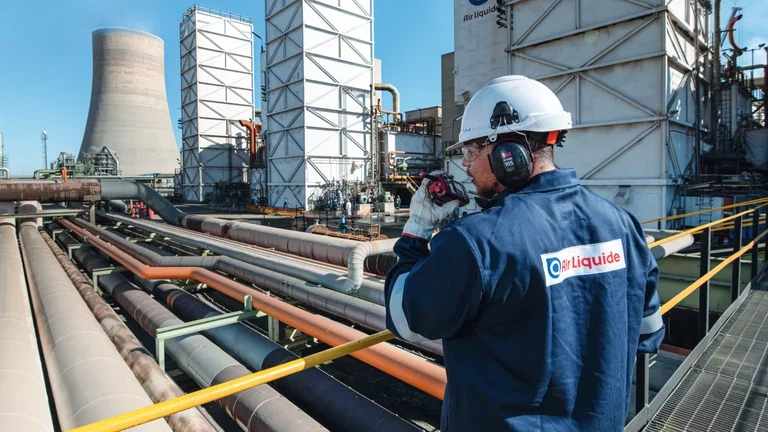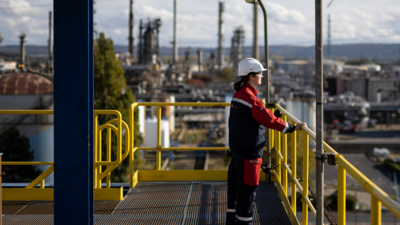Reducing CO₂ emissions at the world’s largest oxygen plant
Published on April 20, 2023
4 minutes

“In a way, these units are coming back home,” says Jens Juckel, gesturing toward a line of seven rectangular towers rising from a mesh of ground-level piping. But, of course, these air separation units (ASU) located in Secunda, in South Africa’s Mpumalanga Province, aren’t going anywhere.
The oxygen produced on-site is mainly used to produce synthesis fuel and chemicals. Following a 480 million euro deal in summer 2021, the oxygen plant is now owned by Air Liquide. “We will be operating all 16 ASUs for the next 15 years, in addition to the unit we already operate today,” says Jens, “and since we built them, it feels like we are coming full circle.”
The deal is a key step in the long-term relationship that the Group has had with Sasol for the past 40 years. Not only is Air Liquide operating the whole oxygen production plant, but it is also modernizing the units. In addition to bringing benefits in terms of safety, reliability and efficiency, the solution provided by Air Liquide will help reduce the amount of CO2 emitted during oxygen production. “We are aiming to cut emissions of the acquired assets in Secunda by 30% to 40% by 2031,” explains Jens. “The most obvious option is to use renewable energy.” Indeed, Air Liquide and Sasol have signed power purchase agreements for the long-term supply of 480 MW of renewable energy. Ultimately, the goal is to procure a total capacity of 900 MW of renewable-generated power for the site.

“We apply digitalization to make maintenance more effective.
”
Lizelle Meyer
Operations Excellence Manager, Air Liquide
Other key contributions to reducing CO2 emissions include improvements in process efficiency and the introduction of a new operating philosophy for the acquired assets. “We have identified and started work on a number of efficiency projects from which we are already seeing significant savings,” says Jens. And then there are what he calls “the quick wins”: running existing units more efficiently. At the eastern set of ASUs, Operations Excellence Manager Lizelle Meyer talks us through them. “Under Sasol, safety and reliability were paramount, as they are to Air Liquide. But we now have a third primary focus as well: energy efficiency, which we are pursuing through advanced process control optimization strategies.”
Air Liquide is also working with the Sasol teams to identify and execute further opportunities for site decarbonization. According to Simon Baloyi, Sasol Executive Vice President, Energy Operations and Technology, the shared ambition to decarbonize operations in Secunda is what makes the partnership with Air Liquide successful. “By improving the energy efficiency of our operations and assets, we will reduce steam usage, which will directly result in less carbon dioxide emissions.”

“The partnership between Air Liquide and Sasol is anchored in open, honest and transparent collaboration.
”
Simon Baloyi
Sasol Executive Vice President, Energy Operations and Technology
“Then there is increased reliability and safety, which has a direct impact on efficiency. Air Liquide uses digitalization to make maintenance more effective,” explains Lizelle, introducing us to Cyril Sebei, Mechanical Area Manager, who is responsible for a maintenance team. “With our extensive cold boxes maintenance program, for example,” explains the engineer, “we are not only ensuring safety, but increasing efficiency.”
“Air Liquide has brought a new operational strategy to the acquired Secunda assets,” Cyril continues. “We now work with Sasol to forecast demand and reduce capacity whenever possible.” He gestures over to the hulking Sasol cooling towers. “For some employees, the acquisition was worrying at first. As it turned out, though, Air Liquide has brought global expertise in industrial gases. It’s been very positive for the atmosphere.” Adds Jens with a chuckle: “In both senses of the term!”

“Air Liquide has brought us global expertise. It’s been very positive for the atmosphere.
”
Cyril Sebei
Mechanical Area Manager, Air Liquide

